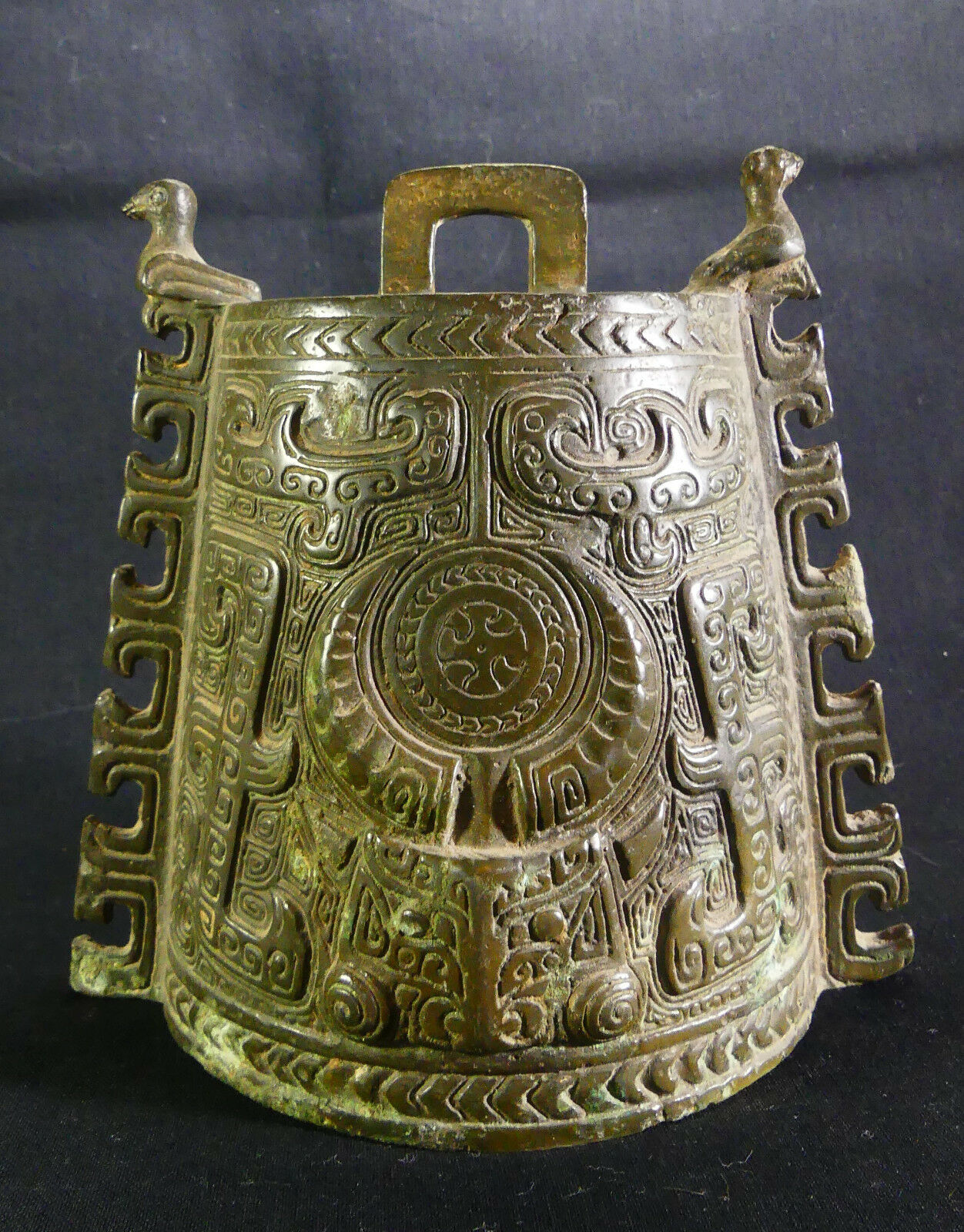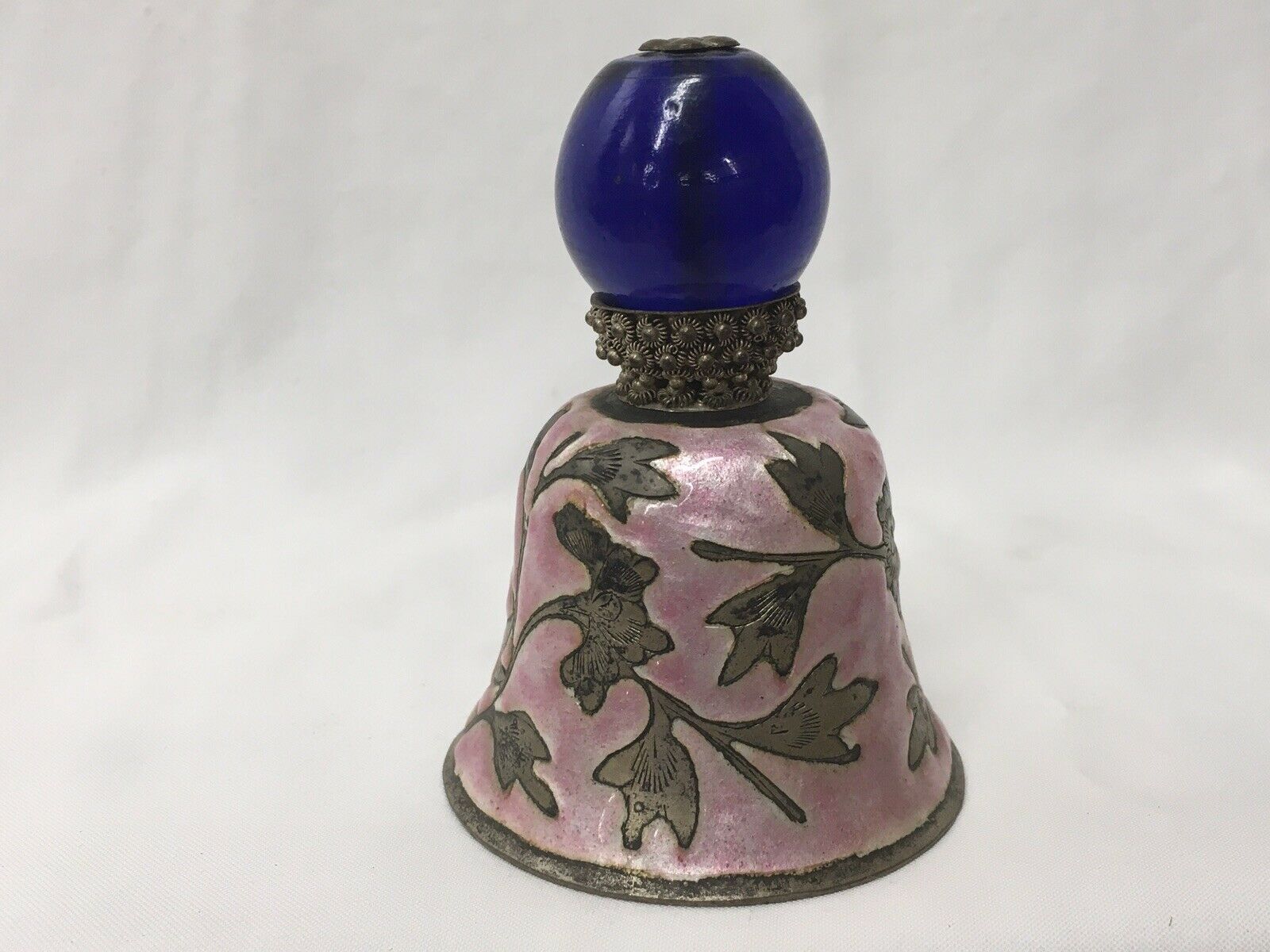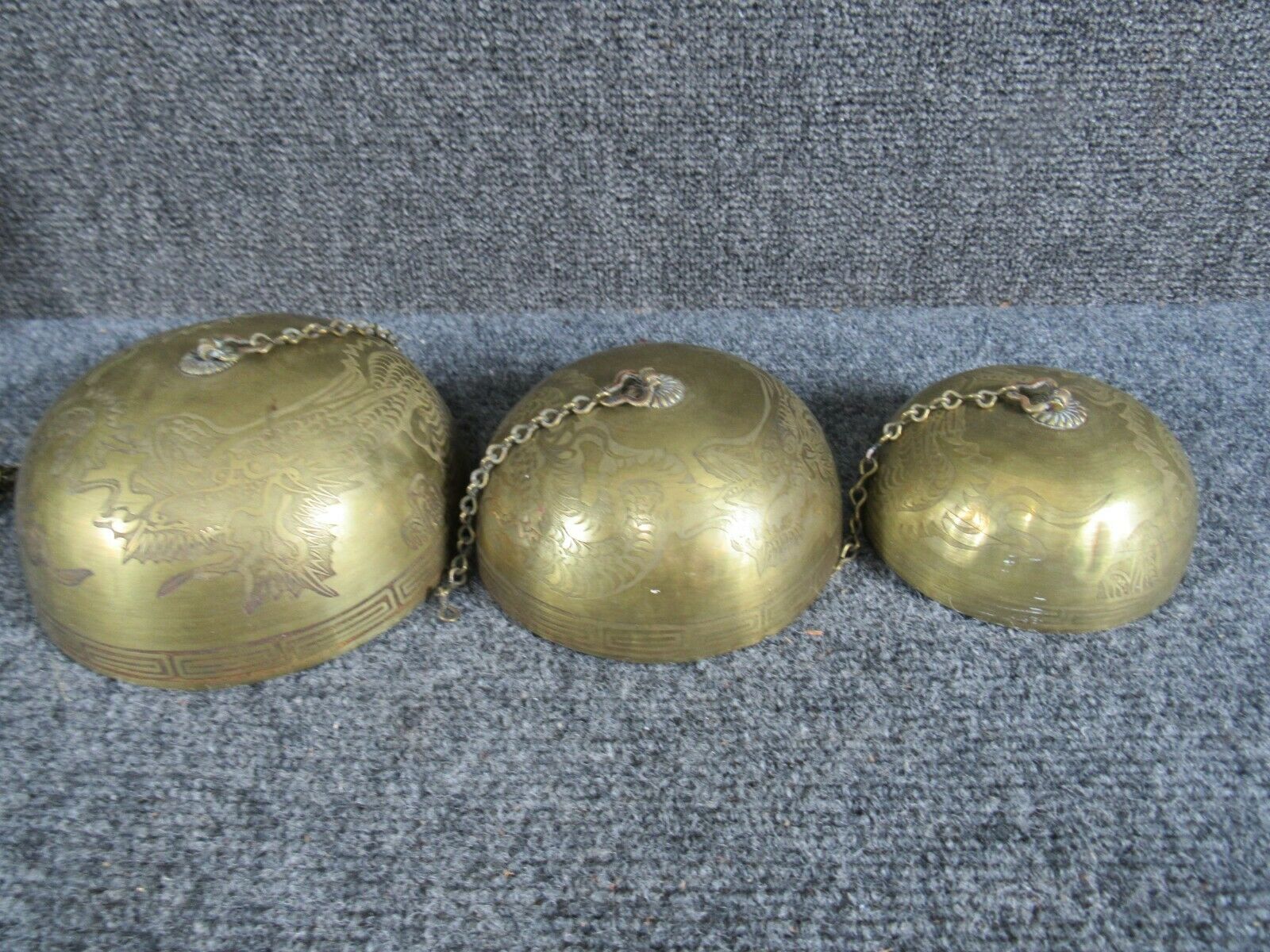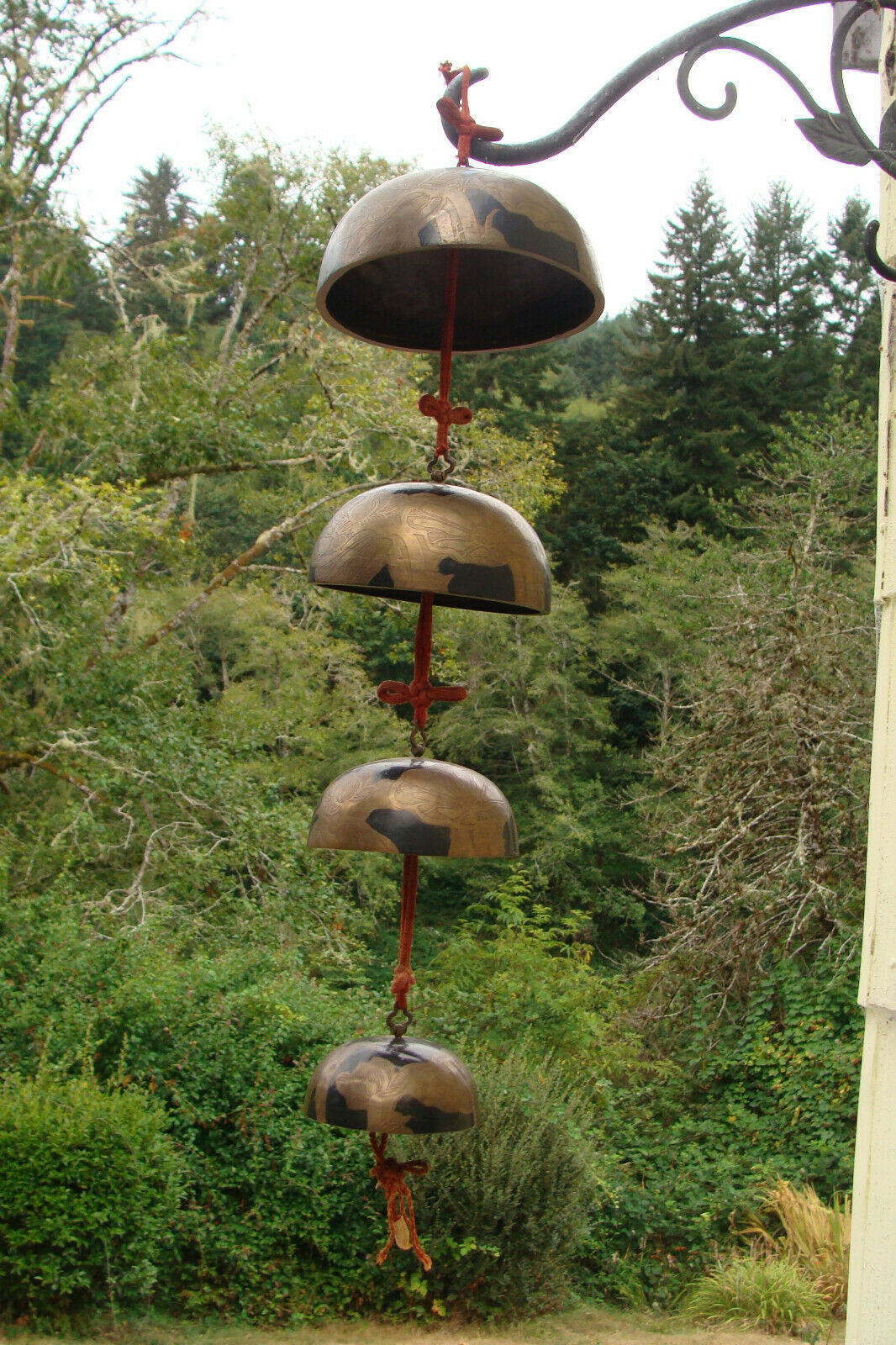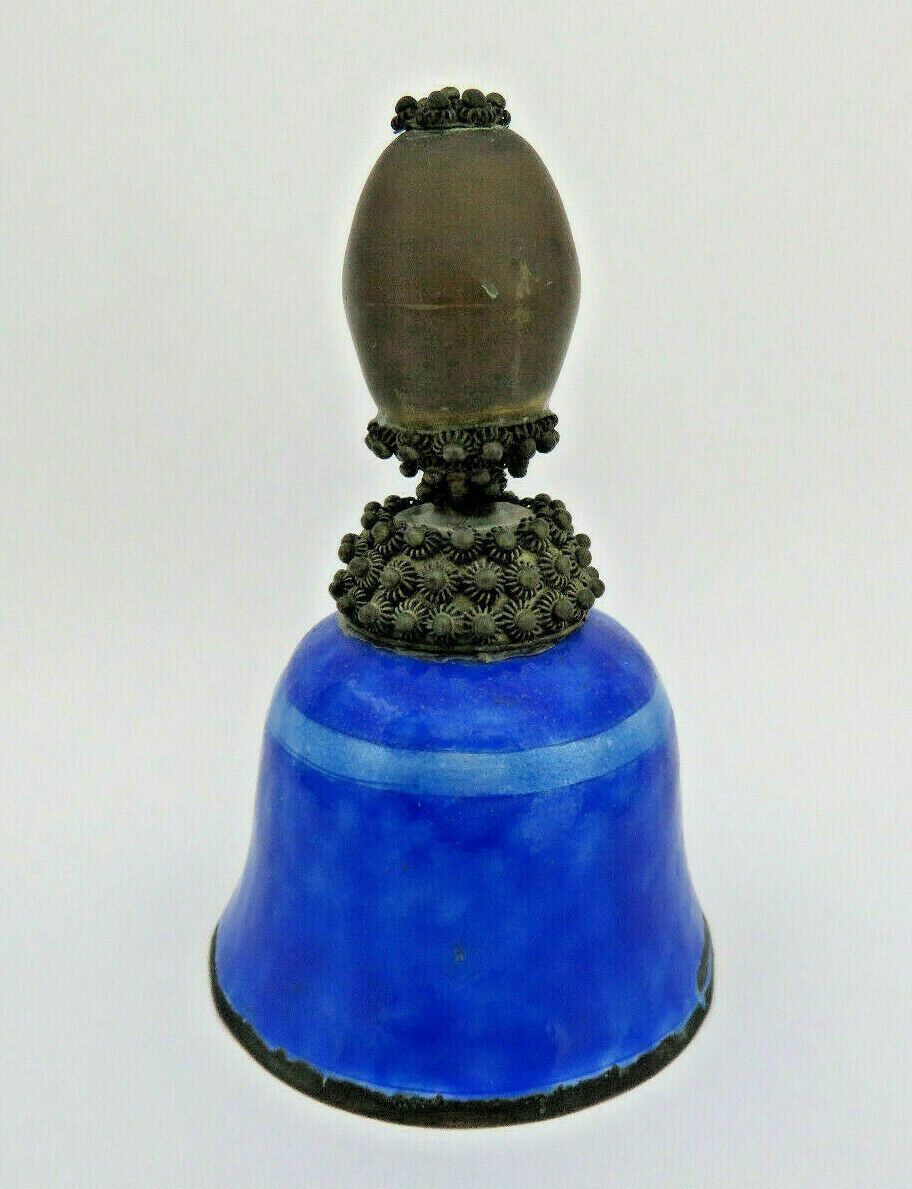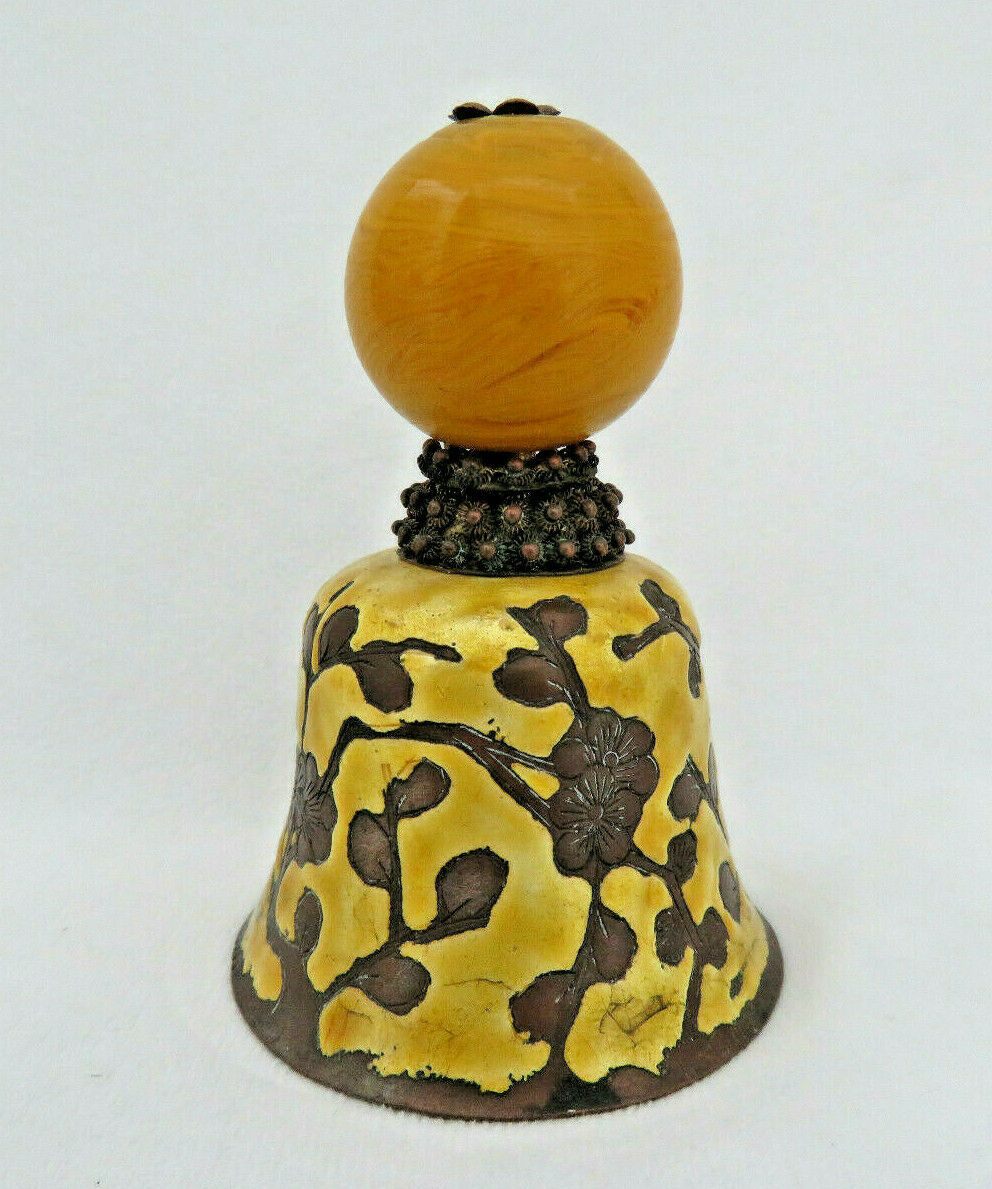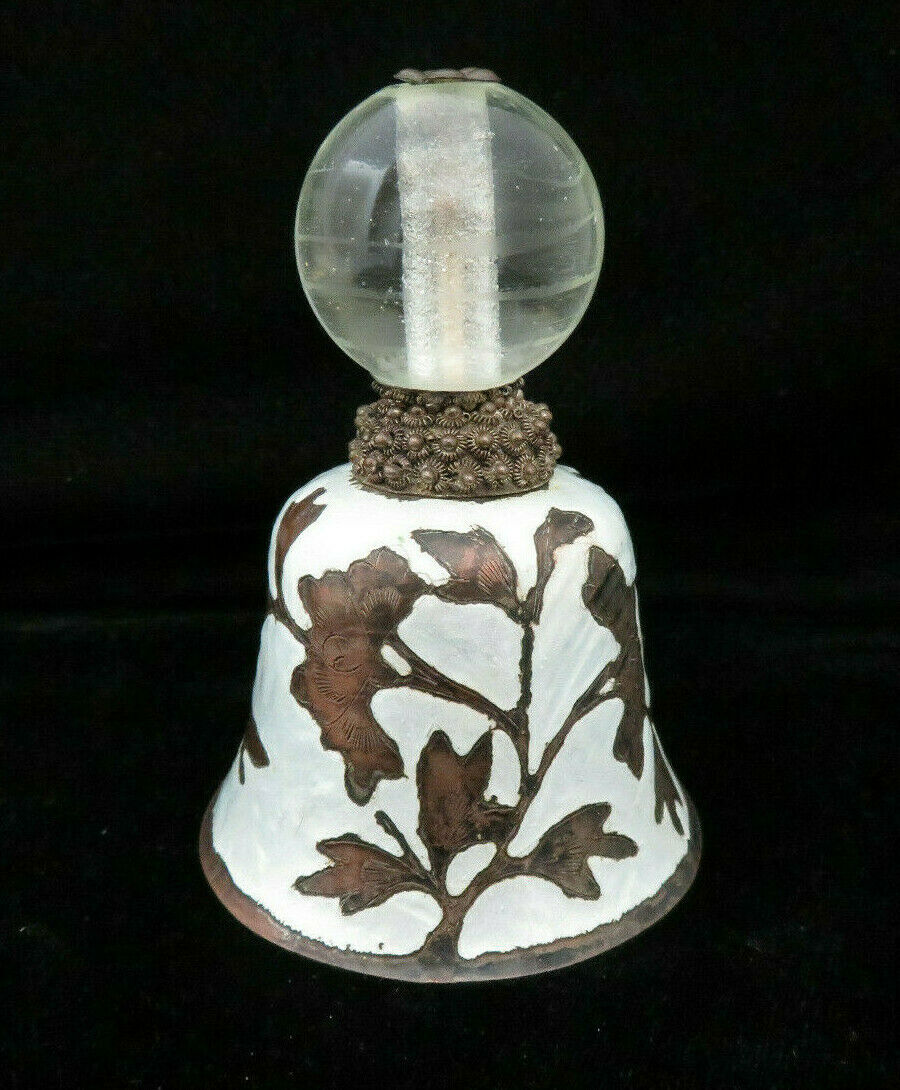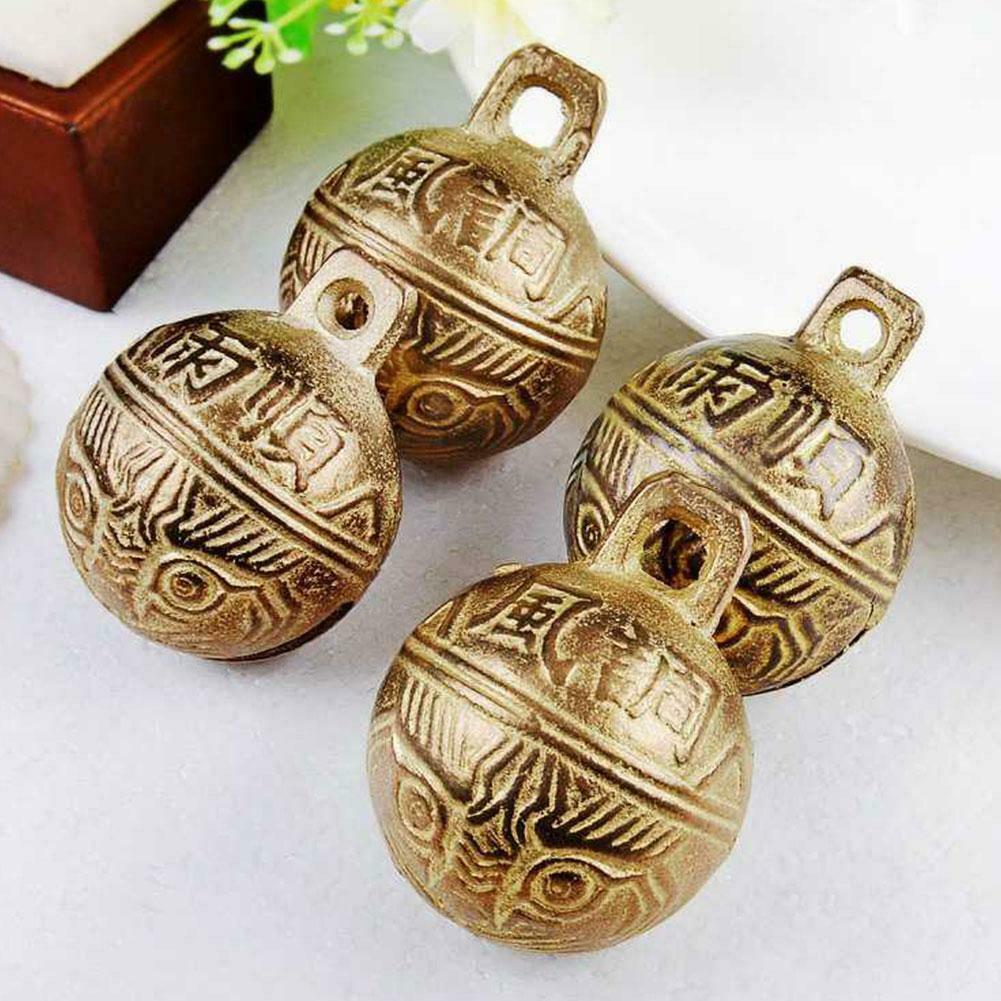-40%
Ancient Chinese Bronze Bell w/BIrds + Taotie. c. W. Zhou Dynasty 770 BC--476 BC
$ 9345.6
- Description
- Size Guide
Description
Ancient CivilizationsAntiques, Artifacts & Fine Collectibles
Ancient Chinese Ritual Bronze Bell (
Zhong
)
Taotie Masks, Birds, and Auspicious Clouds
Eastern Zhou Dynasty—Spring and Autumn Period
c. 770 B.C.–476 B.C.
Est. Period:
Eastern Zhou Dynasty to Spring and Autumn Period (770–476 B.C.)
Est. Date:
Early 7
th
century B.C.
Culture:
China
Medium: Cast Bronze
Dimensions: H. 5” (130 mm); W. 5.4” (137 mm); D. 3.4” (87 mm)
Weight:
1.45 lbs. (658 gr.)
Classification: Metalwork
DETAILS
This Chinese Ritual Bronze Bell (called a “
Zhong
” in China) is beautifully cast with Taotie Masks, Birds, and Auspicious Clouds.
Zhong was the most widely used bronze percussion instrument in ancient China.
Its form was developed about 3,000-years-ago from the hand-held bells called “
Nao.
”
Different size and pitch bells were hung on a wooden hanger, at least three in a set, with the mouth facing downwards.
It is likely that is bell was part of a larger, matched set of bells.
Zhong shaped bells can produce a sound clearer than
Nao
and were often used for both ceremonial and ritual occasions.
These fabulous bells appeared in the early Western Zhou Dynasty and then fully developed after the late Western Zhou Dynasty.
These bells were so meticulously crafted that each bell produced two different tones depending on where it was struck with a wooden mallet.
The production of Ritual Bronze items in ancient China were costly and time consuming to make, and their production was strictly controlled by the ruling class.
Therefore, bronze was considered the most precious metal and could only be afforded by royalty and nobility of the period.
Lavishly decorated bells, such as the present example, were an important component of larger ceremonial functions within Shang and Zhou dynasty ritual culture. Signifiers of wealth and power, bronze bells served as markers of cultural sophistication and erudition. Archaeological excavations have found sets of bells placed within elaborate burial chambers accompanying prominent figures. Sumptuary laws determined the number of bells allotted to the deceased.
Estimated Price: ,000--,000
Details and Translation
This Ancient Chinese Ritual Bronze Bell is beautifully cast with
Taotie
Masks, Birds, and Auspicious Clouds:
·
The
Taotie
is a fierce, mythical creature that was thought to scare away evil spirits.
He is prominently featured on the center, lower part of the bell, (see photo # 4), with his nose in the center, two large slanted eyes, and two large curved horns.
·
Between the two, curved horns is a symbol that looks like a cross inside a circle (see photo # 7)
This is an ancient form of the Chinese character “
Tien
” which means fields, land, or country, or Heaven.
In this context, I believe it means the “Heaven—the place where the Immortal Ancestors Dwell.”
·
On either side of the bell are two, large, symmetric characters that look like a capital letter “
Z
” with a line through it.
It appears to be an ancient form of the Chinese character “
Ch’i”
which means “to rise or to put oneself in motion.”
In this context on a bell, I believe it implies that the “Ritual Prayers for this man’s soul to rise to the Heaven (
Tien
).
·
The tiny symbols inside the large
Tien
character and prominently placed throughout the bell’s surface (the ones that look like bent staples) are the character for “Auspicious Clouds.”
·
The two, small, finial birds sitting on the very top surface of the bell (see photo # 3) were considered to be “Messengers to the Spirits and Ancestors Living in Heaven (
Tien
).”
Birds were thought to be the living link between Heaven and Earth.
They could carry the lovely sounds of this bell and the attached prayers and souls of the departed to the Heavens.
Also known in sets as "
bianzhong
," bells of this type were fixtures outside and within temples located in the Forbidden City and were assembled in graduating sets of sixteen, suspended in two tiers of eight on tall and elaborate wooden frames. On holy days of sacrifice at the Temple of Heaven, these bells would be struck to open the ritual witnessed by the Emperor and his court.
Bells in Ancient China
From the Western Zhou Dynasty to the Spring and Autumn Period and the Warring States Period, musical bells shaped like combined pairs of tiles appeared in many areas of the country. The mouth of such a bell faced down, as it was struck more easily when it was in a suspended position.
Yongzhong, niuzhong
and small
bo
bells shaped like combined pairs of tiles appeared in chimes or groups. Many of them bore inscriptions of events or were dedicated to a family or person.
The court of the Zhou Dynasty promulgated the ritual and musical institutions embodied by bells and musical stones, suited to the hierarchy. As a musical instrument of the aristocracy, the bell deviated from its original nature and displayed a symbolic function. The suspending pattern and number of bells and musical stones demonstrated one's position and power.
In the Zhou Dynasty, bronze bells emerged as musical instruments for rituals, celebrations, and performances held by the aristocracy.
Bronze production was strictly for the upper class in ancient China, and bronze was only for the aristocracy and imperial use.
The famous, cast bronze zhong (
鐘
) bell, is classified as a suspended, clapper-less bell.
Zhong were normally cast in sets of six, seven, eight or more to form a musical scale, and they were played in the company of both string, drum, and wind instruments.
The mouth of the bell is shaped in the form of a flattened ellipse and each one was skillfully and precisely cast so that it would produce two different pitches, depending on where the musician struck the side with his wooden mallet.
Amazing!!
The Chinese Bronze Age was established by 1700 B.C.E. in the northern region that was the base of the Shang dynasty's base. Bronze objects were typically used in ancient China for state ceremonies and rituals venerating ancestors.
These bells had a special purpose, one that links ritual to the arts in ancient China. They were cast as a graduated set of bells of varying tones and sizes that would have been struck with mallets to create music. (Bells of this scale would not be produced in Europe for another millennium.) The music created by such bells was an integral part of Chinese ritual life, used to create bonds of connection between the living and the dead, the listeners and their rulers.
This bells appears to have ancient Chinese characters called Seal Script (in Chinese (
Ku’wen
) cast on the flat, top side of the bell.
However, the oxidation has obscured the fine lines of each character to such an extent that I am unable to translate them. Research suggests that these characters may have indicated the bell’s musical pitch.
Each bronze bell was designed to produce two specific tones; this is known because inscriptions were often cast into the bronze naming the bell's tones.
Once a bell was cast, its tone could not be changed or adjusted. What remains a mystery for scholars is how ancient Chinese metal smiths could cast these instruments with such precision so early in history.
Scholars have learned a great deal about music making in ancient China from archaeological research. One spectacular discovery in 1977 was the tomb of Marquis Yi of Zeng, the ruler of a small Chinese state in the 5th century B.C.E. and a patron of music. Over one hundred instruments were preserved in his tomb, including a massive set of sixty-five bells in a separate burial chamber. As this burial site indicates, music was so important that instruments were set up to accompany the deceased in the afterlife.
REFERENCES
·
Museum of Chinese History, Beijing
·
National Museum of China
·
Shanghai Museum
·
The Ancestral Landscape
, David N. Knightley, 2000
·
The Great Bronze Age of China
, edited by Wen Fong, MET, 1980
·
Imperial Tombs of China
, 1995
·
British Museum, Jessica Rawson
·
Smithsonian Museum, Sackler & Freer Gallery, WDC
·
Virginia Museum of Fine Arts (VMFA)
·
MET, New York
Please ask any questions you may have before you bid! Thanks for Looking!
Please review all 12 photos as they are part of the description.
Per e-Bay's rules, PayPal only please!
THANKS!
FREE SHIPPING cost includes Insurance and is accurate for all 50 United States.
International buyers are responsible for all shipping costs, full insurance, and any import taxes or duties.
Sorry, but Washington State residents are required to pay the state sales tax. Thanks...
